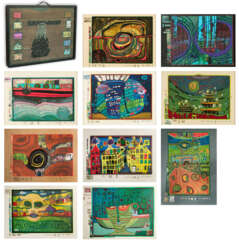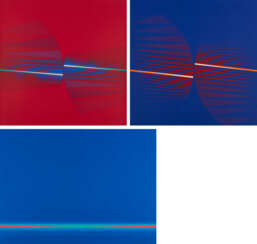20.000.000

Friedensreich Regentag Dunkelbunt Hundertwasser was an Austrian visual artist and architect who also worked in the field of environmental protection.
Hundertwasser stood out as an opponent of "a straight line" and any standardization, expressing this concept in the field of building design. His best known work is the Hundertwasserhaus in Vienna, which has become a notable place of interest in the Austrian capital, characterised by imaginative vitality and uniqueness.


Friedensreich Regentag Dunkelbunt Hundertwasser was an Austrian visual artist and architect who also worked in the field of environmental protection.
Hundertwasser stood out as an opponent of "a straight line" and any standardization, expressing this concept in the field of building design. His best known work is the Hundertwasserhaus in Vienna, which has become a notable place of interest in the Austrian capital, characterised by imaginative vitality and uniqueness.


Friedensreich Regentag Dunkelbunt Hundertwasser was an Austrian visual artist and architect who also worked in the field of environmental protection.
Hundertwasser stood out as an opponent of "a straight line" and any standardization, expressing this concept in the field of building design. His best known work is the Hundertwasserhaus in Vienna, which has become a notable place of interest in the Austrian capital, characterised by imaginative vitality and uniqueness.


Friedensreich Regentag Dunkelbunt Hundertwasser was an Austrian visual artist and architect who also worked in the field of environmental protection.
Hundertwasser stood out as an opponent of "a straight line" and any standardization, expressing this concept in the field of building design. His best known work is the Hundertwasserhaus in Vienna, which has become a notable place of interest in the Austrian capital, characterised by imaginative vitality and uniqueness.


Friedensreich Regentag Dunkelbunt Hundertwasser was an Austrian visual artist and architect who also worked in the field of environmental protection.
Hundertwasser stood out as an opponent of "a straight line" and any standardization, expressing this concept in the field of building design. His best known work is the Hundertwasserhaus in Vienna, which has become a notable place of interest in the Austrian capital, characterised by imaginative vitality and uniqueness.


Friedensreich Regentag Dunkelbunt Hundertwasser was an Austrian visual artist and architect who also worked in the field of environmental protection.
Hundertwasser stood out as an opponent of "a straight line" and any standardization, expressing this concept in the field of building design. His best known work is the Hundertwasserhaus in Vienna, which has become a notable place of interest in the Austrian capital, characterised by imaginative vitality and uniqueness.


Friedensreich Regentag Dunkelbunt Hundertwasser was an Austrian visual artist and architect who also worked in the field of environmental protection.
Hundertwasser stood out as an opponent of "a straight line" and any standardization, expressing this concept in the field of building design. His best known work is the Hundertwasserhaus in Vienna, which has become a notable place of interest in the Austrian capital, characterised by imaginative vitality and uniqueness.


Friedensreich Regentag Dunkelbunt Hundertwasser was an Austrian visual artist and architect who also worked in the field of environmental protection.
Hundertwasser stood out as an opponent of "a straight line" and any standardization, expressing this concept in the field of building design. His best known work is the Hundertwasserhaus in Vienna, which has become a notable place of interest in the Austrian capital, characterised by imaginative vitality and uniqueness.


Friedensreich Regentag Dunkelbunt Hundertwasser was an Austrian visual artist and architect who also worked in the field of environmental protection.
Hundertwasser stood out as an opponent of "a straight line" and any standardization, expressing this concept in the field of building design. His best known work is the Hundertwasserhaus in Vienna, which has become a notable place of interest in the Austrian capital, characterised by imaginative vitality and uniqueness.


Friedensreich Regentag Dunkelbunt Hundertwasser was an Austrian visual artist and architect who also worked in the field of environmental protection.
Hundertwasser stood out as an opponent of "a straight line" and any standardization, expressing this concept in the field of building design. His best known work is the Hundertwasserhaus in Vienna, which has become a notable place of interest in the Austrian capital, characterised by imaginative vitality and uniqueness.


Friedensreich Regentag Dunkelbunt Hundertwasser was an Austrian visual artist and architect who also worked in the field of environmental protection.
Hundertwasser stood out as an opponent of "a straight line" and any standardization, expressing this concept in the field of building design. His best known work is the Hundertwasserhaus in Vienna, which has become a notable place of interest in the Austrian capital, characterised by imaginative vitality and uniqueness.


Friedensreich Regentag Dunkelbunt Hundertwasser was an Austrian visual artist and architect who also worked in the field of environmental protection.
Hundertwasser stood out as an opponent of "a straight line" and any standardization, expressing this concept in the field of building design. His best known work is the Hundertwasserhaus in Vienna, which has become a notable place of interest in the Austrian capital, characterised by imaginative vitality and uniqueness.


Friedensreich Regentag Dunkelbunt Hundertwasser was an Austrian visual artist and architect who also worked in the field of environmental protection.
Hundertwasser stood out as an opponent of "a straight line" and any standardization, expressing this concept in the field of building design. His best known work is the Hundertwasserhaus in Vienna, which has become a notable place of interest in the Austrian capital, characterised by imaginative vitality and uniqueness.


Friedensreich Regentag Dunkelbunt Hundertwasser was an Austrian visual artist and architect who also worked in the field of environmental protection.
Hundertwasser stood out as an opponent of "a straight line" and any standardization, expressing this concept in the field of building design. His best known work is the Hundertwasserhaus in Vienna, which has become a notable place of interest in the Austrian capital, characterised by imaginative vitality and uniqueness.


Friedensreich Regentag Dunkelbunt Hundertwasser was an Austrian visual artist and architect who also worked in the field of environmental protection.
Hundertwasser stood out as an opponent of "a straight line" and any standardization, expressing this concept in the field of building design. His best known work is the Hundertwasserhaus in Vienna, which has become a notable place of interest in the Austrian capital, characterised by imaginative vitality and uniqueness.


Henri Cornelis Bol is a Dutch realist painter.
He studied at the Eindhoven Academy of Design and, in addition to painting, had a passion for antiques, the objects of which he used in his works. Bol created realistic still lifes with elements of the trompe-l'œil technique.


Henri Cornelis Bol is a Dutch realist painter.
He studied at the Eindhoven Academy of Design and, in addition to painting, had a passion for antiques, the objects of which he used in his works. Bol created realistic still lifes with elements of the trompe-l'œil technique.


Friedensreich Regentag Dunkelbunt Hundertwasser was an Austrian visual artist and architect who also worked in the field of environmental protection.
Hundertwasser stood out as an opponent of "a straight line" and any standardization, expressing this concept in the field of building design. His best known work is the Hundertwasserhaus in Vienna, which has become a notable place of interest in the Austrian capital, characterised by imaginative vitality and uniqueness.


Gunther Gerzso was a Mexican painter, designer and director and screenwriter for film and theatre.
Gunther Gerzso was awarded the Guggenheim Fellowship in 1973 and later in 1978 he was the recipient of the Premio Nacional de Bellas Artes.

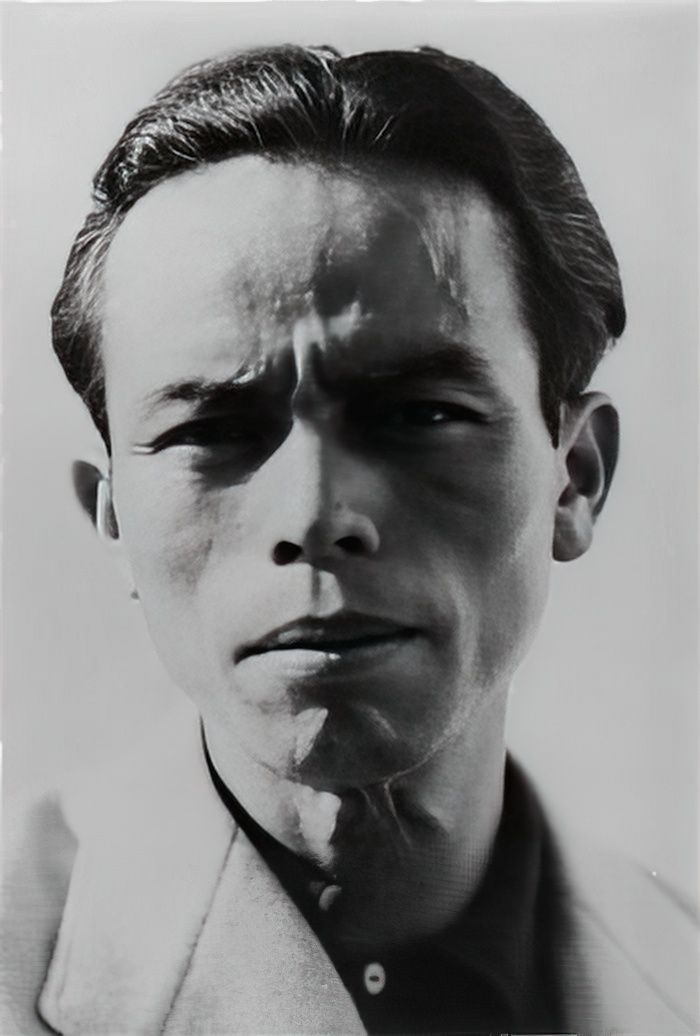
Vu Cao Dam (Vietnamese: Vũ Cao Đàm) was a Vietnamese painter. He was one of the alumni of Victor Tardieu's École des Beaux-Arts de l’Indochine in Hanoi in the 1930s, along with Mai Trung Thứ, Lê Phổ and woman painter Lê Thị Lựu to emigrate to France and make a career in Paris.


Vu Cao Dam (Vietnamese: Vũ Cao Đàm) was a Vietnamese painter. He was one of the alumni of Victor Tardieu's École des Beaux-Arts de l’Indochine in Hanoi in the 1930s, along with Mai Trung Thứ, Lê Phổ and woman painter Lê Thị Lựu to emigrate to France and make a career in Paris.


Yozo Hamaguchi was a Japanese artist and copperplate engraver who revived the almost forgotten technique of mezzotint by the 20th century.
He studied at the Tokyo University of Art, traveled to Europe, worked in Paris, and participated in exhibitions. Hamaguchi innovatively inserted bright colors into his black-and-white mezzotints, producing surreal and abstract paintings.


Jeanloup Sieff was a French photographer distinguished for his portraits, landscapes, and notably, his nudes. Born on November 30, 1933, in Paris, Sieff was known for his mastery in the use of black and white film, and his skillful use of wide-angle lenses and dodging techniques in the darkroom. His career spanned various fields, including fashion photography, where he was particularly prolific, contributing to major publications such as Elle.
Sieff's education at the École Vaugirard in Paris and the École Supérieure d’arts appliqués in Vevey, Switzerland, laid the foundation for a career that would be marked by an elegant integration of surrealism into his works, reminiscent of Man Ray's influence. He began as a freelance photojournalist in 1954 before later turning his lens towards fashion.
Sieff's photographs, characterized by an ethereal quality and a certain timelessness, continue to be celebrated in exhibitions and collections around the world. His work is not only a study of form and contrast but also an exploration of the subtle interplay of light and shadow.
For those interested in the evolution of photography, particularly in the realm of fashion and portraiture, Jeanloup Sieff’s work stands as an important bridge between the classic and the modern. His images remain a source of inspiration for photographers and a subject of admiration for collectors and art lovers globally.
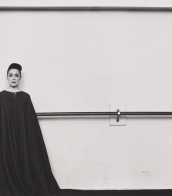

Jeanloup Sieff was a French photographer distinguished for his portraits, landscapes, and notably, his nudes. Born on November 30, 1933, in Paris, Sieff was known for his mastery in the use of black and white film, and his skillful use of wide-angle lenses and dodging techniques in the darkroom. His career spanned various fields, including fashion photography, where he was particularly prolific, contributing to major publications such as Elle.
Sieff's education at the École Vaugirard in Paris and the École Supérieure d’arts appliqués in Vevey, Switzerland, laid the foundation for a career that would be marked by an elegant integration of surrealism into his works, reminiscent of Man Ray's influence. He began as a freelance photojournalist in 1954 before later turning his lens towards fashion.
Sieff's photographs, characterized by an ethereal quality and a certain timelessness, continue to be celebrated in exhibitions and collections around the world. His work is not only a study of form and contrast but also an exploration of the subtle interplay of light and shadow.
For those interested in the evolution of photography, particularly in the realm of fashion and portraiture, Jeanloup Sieff’s work stands as an important bridge between the classic and the modern. His images remain a source of inspiration for photographers and a subject of admiration for collectors and art lovers globally.


Friedensreich Regentag Dunkelbunt Hundertwasser was an Austrian visual artist and architect who also worked in the field of environmental protection.
Hundertwasser stood out as an opponent of "a straight line" and any standardization, expressing this concept in the field of building design. His best known work is the Hundertwasserhaus in Vienna, which has become a notable place of interest in the Austrian capital, characterised by imaginative vitality and uniqueness.


Chen Zhen was a Chinese-French conceptual artist known for his large-scale sculptures and installations such as La Danse de la fontaine émergente in Paris. He is recognized as one of the most important Chinese artists since the 1990s.

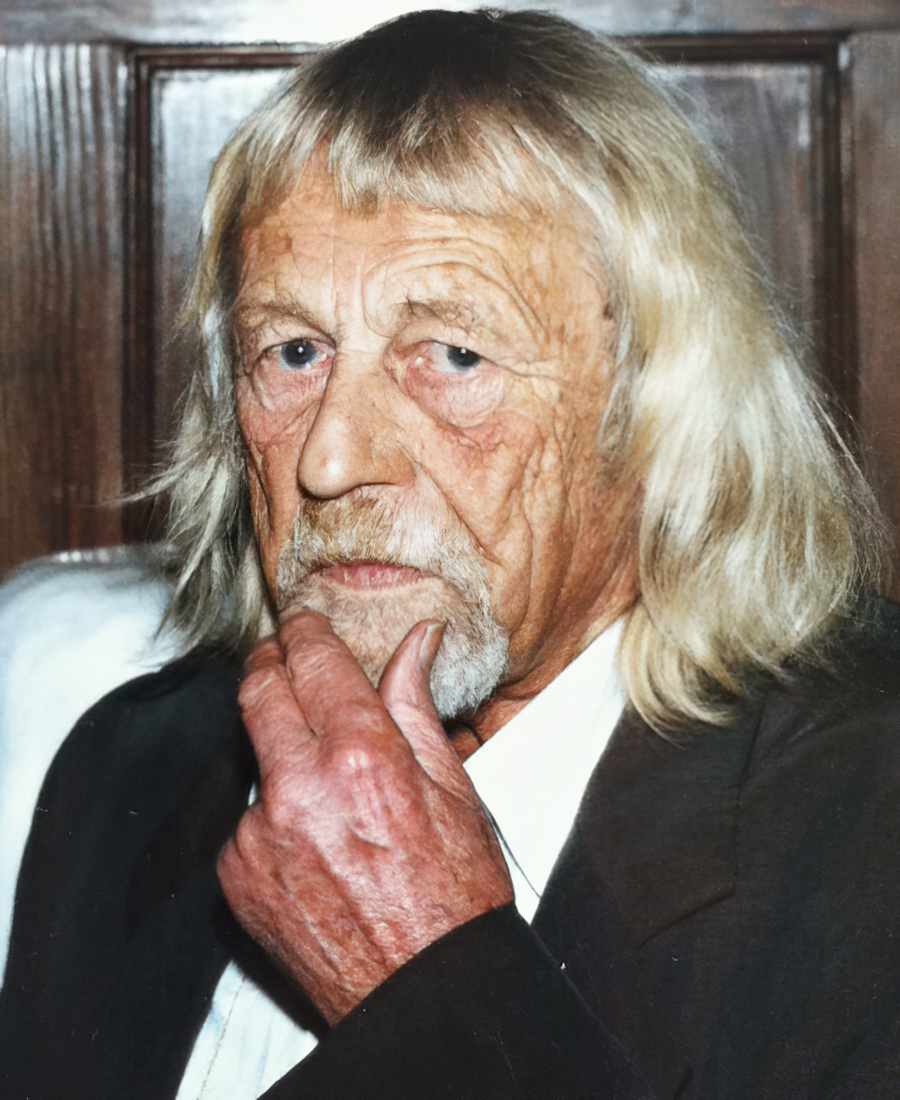
Lothar Quinte was a German painter of the avant-garde.


Lothar Quinte was a German painter of the avant-garde.


Lothar Quinte was a German painter of the avant-garde.


Vu Cao Dam (Vietnamese: Vũ Cao Đàm) was a Vietnamese painter. He was one of the alumni of Victor Tardieu's École des Beaux-Arts de l’Indochine in Hanoi in the 1930s, along with Mai Trung Thứ, Lê Phổ and woman painter Lê Thị Lựu to emigrate to France and make a career in Paris.



